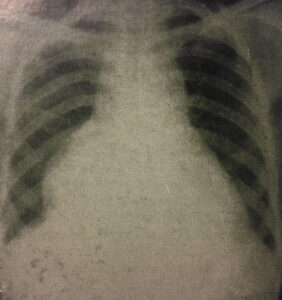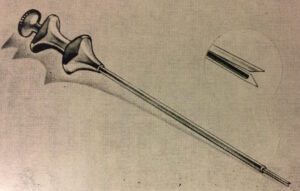The fluid again did not give a diagnosis, but the pericardial biopsy showed giant cell granulomas. A guinea pig was inoculated with the fluid, and 5 weeks later it had developed tuberculous lesions, confirming the diagnosis.
TB is a rare cause in UK practice. Viral causes are probably the most common cause of symptomatic acute pericarditis, followed by autoimmunity. However big effusions causing tamponade are probably most likely after cardiac surgery or myocardial injury (Dressler Syndrome), and in malignancy. Infections are a less common cause.
Further info
This case is from Sanghvi et al 1958, Sawai Man Singh Hospital and Medical College Rajasthan (Pericardial biopsy with Vim-Silverman needle, Archives of Internal Medicine 101:1147-10). Pushing a big biopsy needle towards the heart sounds hazardous, and probably fortunately the approach didn’t catch on. Guinea pig inoculation was a quicker, less demanding technique than TB cultures, though these had been developed in the 1930s.
Pericarditis from TB is rarely encountered in developed countries now, but still not rare worldwide. Drug resistance, and co-infection with HIV, are important issues. Surgery may be required in chronic examples, but is not always available in the areas of highest incidence.
Further further info
History of tuberculosis (Wikipedia) is fascinating.
The image shows a modified Vim Silverman needle, the predecessor of the ‘Trucut’ cutting needle developed for liver biopsies, extended in the mid 1950s to renal biopsies (Renal biopsy becomes mainstream, 1954).
 ECG showed inverted T waves across anterolateral chest leads.
ECG showed inverted T waves across anterolateral chest leads.